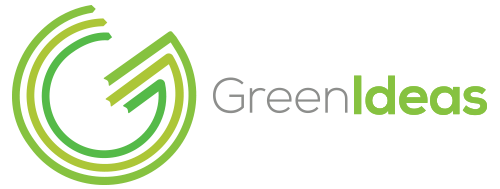This is the first LEED BD+C, formally New Construction (NC), Exam Preparation Seminar that has been reviewed and recommended by the U.S. Green Building Council Education Provider Program. Green Ideas is approved for their LEED for Existing Buildings v2.0 Exam Preparation Seminar as well as their half day Construction Manager’s Responsibilities with LEED for New Construction.
The Green Ideas faculty work with the LEED Rating Systems on a daily basis and our knowledge and experience comes through in our seminars. We also provide continue education units for American Institute of Architects (AIA) or a certificate of completion for others to report to other associations.
The primary goal of this seminar is to prepare attendees for success when taking the BD+C, formally LEED-NC, Professional Accreditation Exam. The Target Audience for New Construction Accreditation is Architects, Building Owners, Contractors, Engineers, Facility Managers, Property Managers, Real Estate Professionals and Sub-Contractors.
The Seminar covers an Introduction to Sustainable Design Principles and Concepts, an overview of the Green Building Industry and the application of the BD+C, formally LEED-NC, Green Building Rating system. This is accomplished by guiding participants through the use of the LEED project checklist, reviewing case studies of different project types from around the country, discussing the LEED registration and certification process and application of the new LEED programs. The instructor then provides a detailed analysis of the LEED-NC Rating System, including a review of all categories, prerequisites, credits, points and submittals required for each credit. The seminar commences with a BD+C, formally LEED-NC, exam review that includes an open discussion and a practice exam. Typically a light breakfast and lunch will be included in the cost of the 8 hour seminar.
6.5 AIA Credits
Certificate of Completion
Register for a LEED BD+C Seminar Now
LEED for Existing Buildings Exam Prep Seminar
The primary goal of this seminar is to prepare attendees for success when taking the LEED EBOM, formally EB, Professional Accreditation Exam. The Target Audience for Existing Building Accreditation is Building Owners and Facility Managers of Commercial Buildings.
The Seminar covers how the LEED EBOM, formally EB, program optimizes the Life-Cycle performance and management of Existing Buildings in a Sustainable manner and demonstrates how utilizing the LEED EBOM, formally EB system can reduce Environmental Impacts and Cost Streams associated with building operations, maintenance, and associated construction, renovation and refurbishment projects. We will also review detailed case studies for three LEED EBOM, formally EB, certified projects, including presentations from facility managers who have implemented the program. In addition to the benefits of the LEED for Existing Buildings the course will guide participants through the LEED program by discussing the LEED registration and certification process and application of the new LEED programs. Your instructor then provides a detailed analysis of the EBOM, formally EB Rating System, including a review of all categories, prerequisites, credits, points and submittals required for each credit. The Seminar commences with a LEED EBOM, formally EB exam review that includes an open discussion and a practice exam. Typically a light breakfast and lunch will be included in the cost of the 8 hour Seminar.
Register for a LEED EBOM Seminar Now
LEED for Commercial Interiors Exam Prep Seminar
The primary goal of this Seminar is to prepare attendees for success when taking the LEED-CI Professional Accreditation Exam. The Target Audience for Commercial Interiors Accreditation is Interior Designers, Architects, Property Managers, Product Manufacturers and Contractors.
The Seminar includes an overview of the LEED-CI program and how it is utilized when designing and completing high-performance, healthy tenant-improvement projects. This is accomplished by guiding participants through the use of the LEED-CI project checklist, reviewing detailed case studies illustrating the many benefits of designing to LEED-CI standards. Your instructor will also discuss the LEED registration and certification process and application of the new LEED programs. The instructor then provides a detailed analysis of the LEED-CI Rating System, including a review of all categories, prerequisites, credits, points and submittals required for each credit. The seminar commences with a LEED-CI exam review that includes an open discussion and a practice exam. Typically a light breakfast and lunch will be included in the cost of the 8 hour Seminar.
6.5 AIA Credits
Certificate of Completion
Register for a LEED-CI Seminar Now


